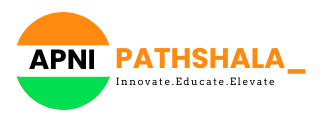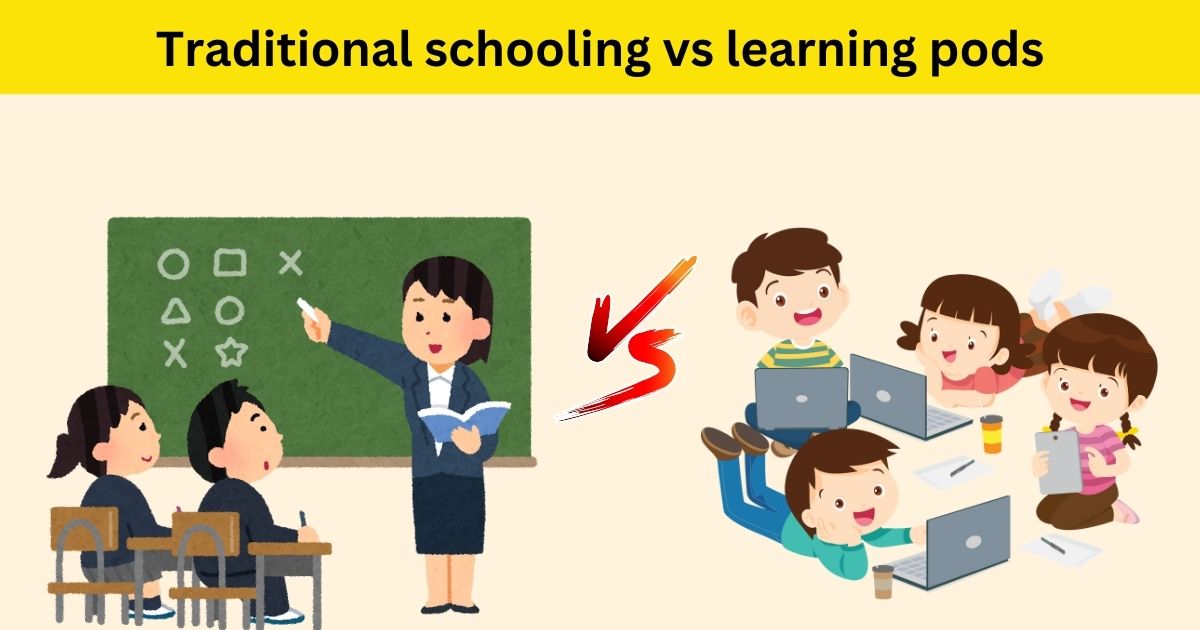According to a recent study, nearly 50% of students report feeling stressed or anxious about school every single day. That’s half of our kids walking into classrooms with a sense of dread rather than excitement. Why? Because traditional schooling often forces everyone into the same mold, regardless of their unique talents, interests, and learning styles.
Now, don’t get me wrong—schools play a crucial role in our society. They provide structure, basic knowledge, and social interaction. But here’s the thing: not all students learn in this environment. For many, traditional schools can feel like a one-size-fits-all solution to a problem that’s far more complex.
Education is changing, and the traditional model of schooling is not the only option for parents and teachers anymore. As we find different approaches to educating children, parents and teachers are exploring different alternative schooling methods.
Let’s understand if we actually need these alternative schools and what are the options we have?
Why do we need Alternatives to schools?
We need alternatives to traditional schooling because the conventional education system doesn’t always meet the diverse needs of every student. Here’s why:
- One-size-fits-all:
Let’s start with the biggest issue: the one-size-fits-all approach. Traditional schools often operate on the assumption that all students learn in the same way, at the same pace, and with the same interests. But we know that’s far from true. Every child is unique—some might be visual learners who need to see things mapped out, while others might learn best through hands-on activities or by listening to explanations.
Take, for example, a student with dyslexia. Reading might be a challenge for them, but that doesn’t mean they’re not intelligent or capable of understanding complex ideas. Yet, in a traditional classroom where reading is a primary method of instruction, they might struggle to keep up, feel frustrated, or worse, think they’re not smart enough.
Similarly, a student with ADHD might find it difficult to sit still and focus during long lectures. But in a typical classroom, where sitting quietly is often the norm, they might be seen as disruptive rather than recognized for their potential to excel in more dynamic, interactive settings.

This lack of customization means that students who don’t fit the standard mold often fall behind or lose interest in learning altogether. They’re left trying to keep up with a system that doesn’t cater to their individual needs, which can lead to feelings of inadequacy and frustration.
- Rigid curriculum and Teaching methods:
Next, let’s talk about the rigidity of the curriculum and teaching methods. Traditional schools typically follow a set curriculum that leaves little room for flexibility or creativity. Students are often expected to learn specific subjects in a specific order, regardless of their interests or how those subjects might connect to the real world.
For instance, imagine a student who is passionate about art but is required to spend most of their time on math and science, subjects they may not connect with. While math and science are important, the lack of flexibility in the curriculum can stifle their passion and creativity. Instead of being encouraged to explore their interests and talents, they’re boxed into a narrow path that might not align with their natural abilities.
Moreover, teaching methods in traditional schools can be quite rigid. The focus is often on memorization and repetition, leaving little room for creative and critical thinking. Students are taught to find the “right” answer rather than to explore different possibilities or think outside the box. This approach can limit their ability to solve real-world problems, where creativity and critical thinking are essential.
What are popular alternatives to traditional schooling?
Homeschooling
Homeschooling is when parents take on the role of educators and teach their children at home. This method allows for a customized curriculum that fits the child’s interests and learning style.
For example, if a student is particularly gifted in math, they can move ahead at a faster pace, exploring advanced topics that would normally be out of reach in a traditional classroom. On the other hand, if they struggle with reading, they can take the time they need to build their skills without the pressure of keeping up with the rest of the class. This kind of customization ensures that learning is both challenging and achievable, making education a much more positive experience.
But it’s not just about academics—homeschooling also offers a family-oriented learning environment that can be incredibly supportive. Instead of being one of many students in a large classroom, homeschooled children often learn in a setting that’s comfortable and familiar, surrounded by people who know them best. Parents can incorporate their family’s values, culture, and interests into the learning process, making education not just about hitting academic targets but also about personal growth and development.
Imagine a typical homeschooling day: A child might start their morning with a math lesson, then spend the afternoon exploring nature during a hike with their family, where they learn about ecosystems and wildlife. Later, they could work on a history project that involves visiting a local museum. This blend of structured learning and real-world experiences makes education more engaging and relevant to their lives.
Homeschooling also allows for a stronger focus on social and emotional development. Because the learning environment is more intimate, parents can closely monitor their child’s progress, address any challenges they face, and support their emotional well-being. This kind of personalized attention can help build confidence and a love of learning that might be harder to achieve in a traditional school setting.
In essence, homeschooling offers a level of flexibility and personalization that traditional schools often struggle to provide. It’s an approach that recognizes that every child is different and deserves an education that’s tailored to their unique needs and potential.
Learning Pods
Learning pods are small, often parent-organized groups offer a fresh approach to education, providing flexibility and customization that many students simply don’t get in a conventional classroom.
One of the biggest advantages of learning pods is the flexibility they offer. In a traditional school setting, everyone is expected to keep up with the same material at the same pace. But in a learning pod, that’s not the case. If one student needs more time to grasp a concept, they can take it without feeling rushed. On the flip side, if another student is ready to move ahead, they’re free to do so. This personalized pace is a game-changer for many kids.
But learning pods aren’t just about academics—they’re also about community. Traditional schools can sometimes feel impersonal, with large class sizes that make it difficult for students to form close relationships with their peers or teachers. In contrast, learning pods are typically small, tight-knit groups where students can build strong bonds with each other and their instructor.
This sense of community is incredibly important, especially in today’s world, where many kids might feel isolated or disconnected. In a learning pod, students get to interact closely with their peers, collaborate on projects, and support each other’s learning. It’s not just about hitting the books—it’s about creating a supportive environment where students feel connected and valued.
For instance, consider a group of five students in a learning pod who not only learn together but also play and grow together. They celebrate each other’s successes, help each other through challenges, and form friendships that might last a lifetime. This kind of community support can make learning more enjoyable and less stressful, helping students develop both academically and socially.
In essence, learning pods offer a flexible, customized learning experience that traditional schools often can’t provide, all while fostering a strong sense of community and connection. This makes them an appealing option for families looking for an alternative to the one-size-fits-all approach of conventional education.
Why Learning Pods Are a Better Alternative?
While homeschooling has been a popular alternative to traditional schooling for many years, learning pods offer some distinct advantages that make them a better fit for certain families. Let’s break down why learning pods might be the superior choice.

- Shared Responsibility
Learning pods distribute this responsibility among multiple families. Instead of one parent shouldering the entire load, the teaching duties and planning can be shared among the group. In some cases, parents might even hire a professional educator to lead the pod, allowing them to focus on their other commitments while still ensuring their child receives a high-quality education. This shared responsibility can make the experience less stressful and more sustainable for everyone involved.
- Social Interaction
In a learning pod, social interaction is built into the model. Students spend time learning alongside their peers, which not only makes the experience more enjoyable but also helps them develop important social skills. They learn how to work in teams, communicate effectively, and build friendships—skills that are just as crucial as academic knowledge.
For example, in a learning pod, students might work together on a science project, each contributing their strengths to the final outcome. They’ll discuss ideas, solve problems together, and learn from each other’s perspectives. This kind of collaboration is harder to achieve in a homeschooling environment where the primary interaction is between the child and the parent.
- Balance Between Structure and Flexibility
Finally, learning pods strike a nice balance between structure and flexibility. Homeschooling can be highly flexible, but that flexibility can sometimes lead to a lack of structure, which might make it difficult for some students to stay on track. On the flip side, traditional schools often have too much structure, leaving little room for customization.
Learning pods offer the best of both worlds. They provide a structured environment where students have a clear schedule and curriculum, but with enough flexibility to accommodate individual learning paces and interests. This balance helps students stay focused and motivated while still allowing for personalized learning experiences.
In summary, learning pods combine the benefits of homeschooling—such as personalized education and flexibility—with the added advantages of shared responsibility, social interaction, diverse learning experiences, and a balanced structure. For families looking for an alternative to both traditional schools and homeschooling, learning pods offer a compelling middle ground.

Apni Pathshala is one such learning pod with the aim to encourage teachers, community leaders and individuals who care about providing better education with the help of technology.
We help these people with resources such as laptops, learning material and guidance so that they can start small schools, homeschools or other types of learning spaces in their communities in the form of PODs. This helps children get a personalized education that suits their needs.
Apni Pathshala works by helping community leaders, teachers and educators set up an interactive learning environment where children can have proper education for growth by creating small schools in the form of homeschools or other personalized learning spaces as well as providing resources.

